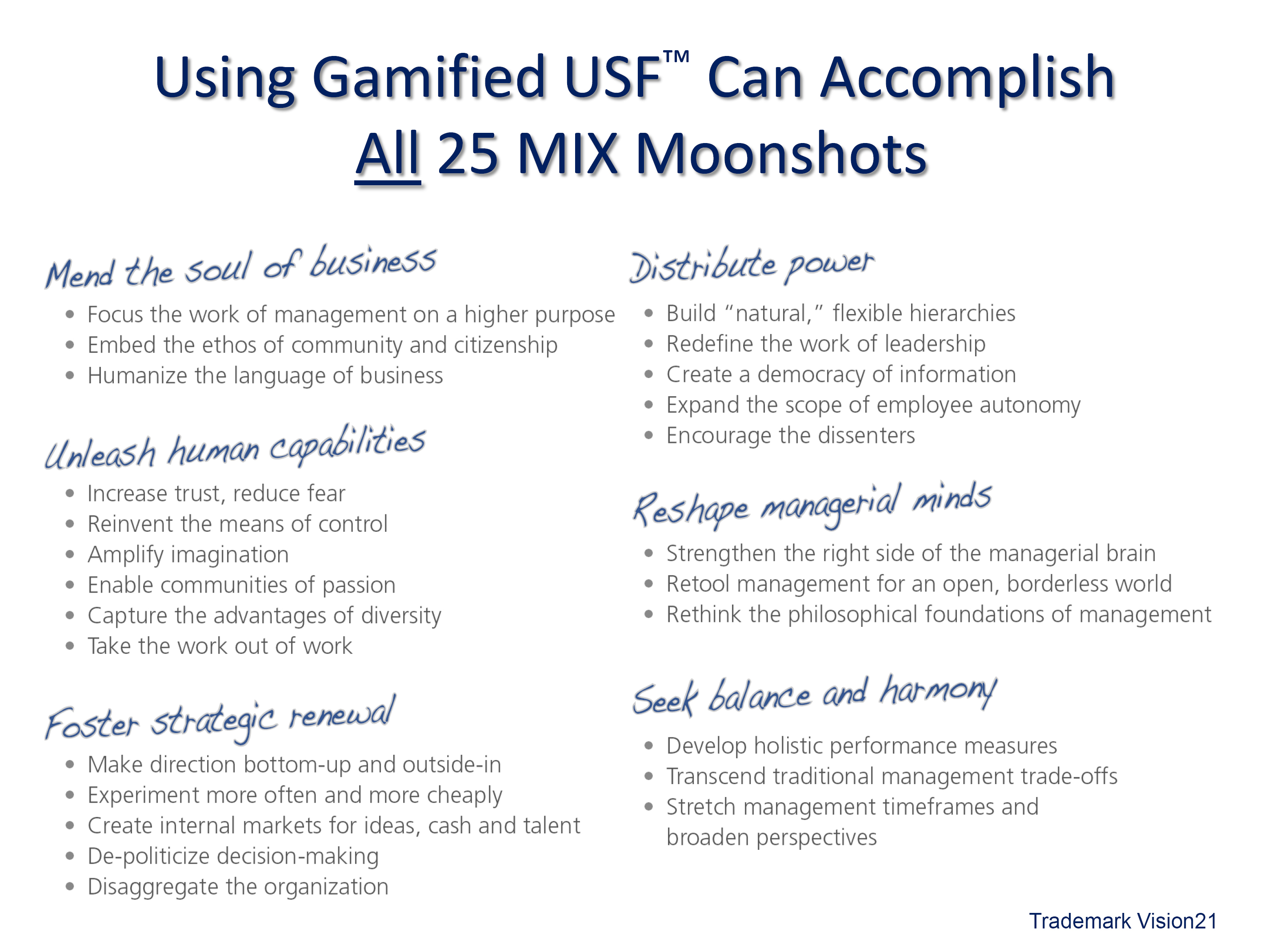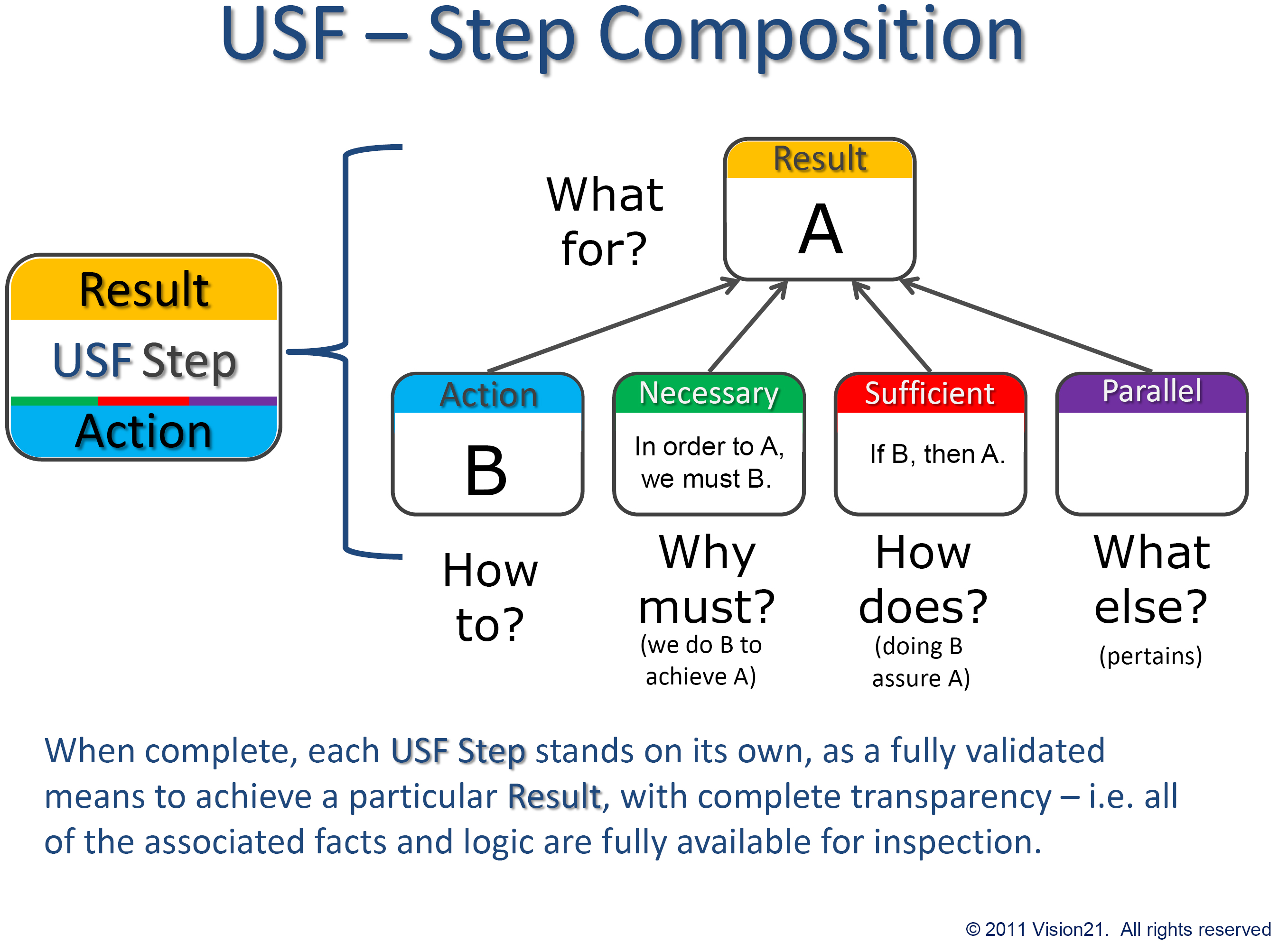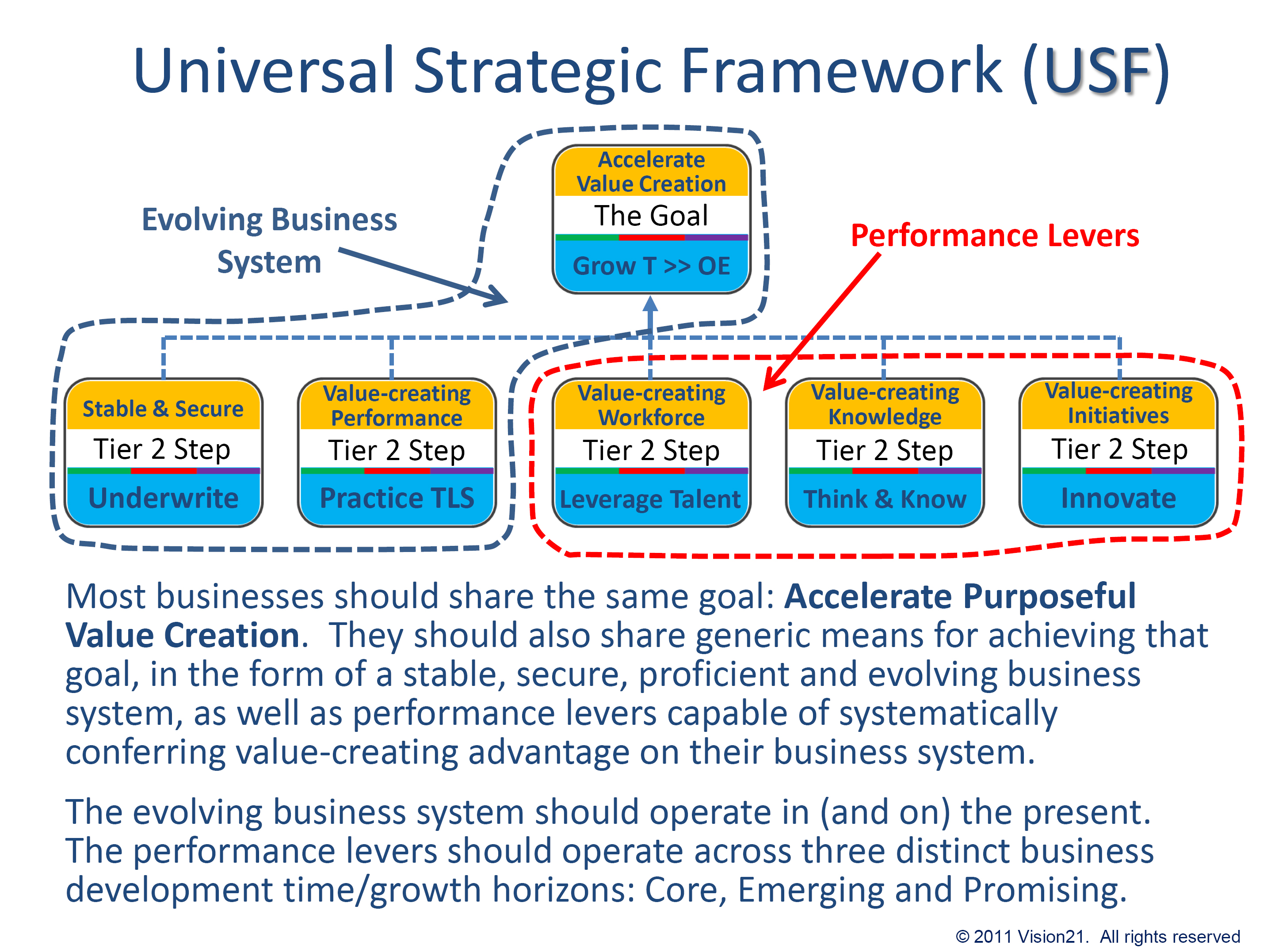Big Thorny Challenge: What passes for enterprise strategy falls way short of the need and opportunity. Poor strategy and poor execution undercut enterprise health and value to the detriment of all stakeholders.
The Highly Creative (but not radical) Solution: Use a proven framework, with five meta-disciplines, to streamline, focus and strengthen strategic planning and execution for huge upside gains, with absolutely no compromise, whatsoever. Gamify the strategic framework as ongoing Web 2.0 enabled processes to enhance and accelerate deployment, stakeholder engagement and enterprise results.
The Problem: What passes for enterprise strategy falls way short of the need.
According to recent reports and articles from Booz & Co. and McKinsey & Company, executives give their enterprises (themselves) low grades on strategic planning and execution.
Most companies chase too many priorities, with mismatched capabilities. “Only one in five executives (21%) think[s] their company has a “right to win” in all the markets it competes in.” (Booz). “Corporate boards sign off on strategic plans that are little more than wishful thinking … we must demand good strategy.” (McKinsey/Rumelt).
The societal costs of such abysmal strategic performance are staggering. Developed economies must create decisively more purposeful value, year after year, in order to maintain and expand standards of living.
Poor strategy and poor execution undermine employee engagement and motivation, as individual employees lack "line of sight" between their activities and contributions and the enterprise purpose.
Poor strategy largely fails to address the biggest enterprise opportunities which lie in the capable and purposeful service of societal (mass customer) needs.
The Solution Part 1: Use a proven framework, with five meta-disciplines, to streamline, focus and strengthen strategic planning and execution, with absolutely no compromise, whatsoever.
Dr. Eliyahu M. Goldratt, author of the business bestseller “the Goal” provided two critical contributions to the proposed solution. Firstly, he conclusively demonstrated that any enterprise can and should operate as ONE business system with ONE goal. Initially, he expressed that one goal as “Make more money, now and in the future”.
Secondly, Dr. Goldratt provided an extremely insightful logic diagram framework to facilitate the process of engaging the entire organization in formulating, validating, documenting, communicating, aligning, synchronizing, executing, monitoring and adjusting all of the steps which are individually necessary and collectively sufficient to achieve any goal. The completed logic diagram validates complex and comprehensive business strategy before the fact!
In short, Eli Goldratt unequivocally established (i) the superiority of operating with ONE enterprise goal AND (ii) gave business leaders the means to do just that, in a rigorous, robust, unambiguous and systematic manner.
From there, Hacker Melrose's firm, Vision21 added major innovations. Using subject matter expertise derived, in part, from other thought leaders (see Credits, below), Vision21 built upon Goldratt’s magnificent contributions to make the logic tree framework even more powerful, focused and robust. Key Vision21 contributions include the addition of meta-disciplines to leverage talent, knowledge and innovation, while augmenting the operational excellence toolkit and more explicitly recognizing the strategic necessity of a stable and secure growth platform. Vision21’s enhanced strategic framework also stresses the importance of a clear and compelling enterprise purpose, rooted in a societal need(s), which particular enterprise capabilities can serve especially well. In order to avoid confusion with legacy meanings, Vision21 substituted Goldratt’ s own one-word definitions for two terms that Goldratt used, unconventionally, in presenting his logic tree concepts. Finally, Vision21 evaluated the strategic framework's capacity to operate within The Three Horizons of Growth: Core, Emerging and Promising. With those changes and the benefit of Goldratt’s latest vision for “Ever-Flourishing” businesses, Vision21 recommends amending the ONE enterprise goal to read: “Accelerate purposeful value creation”, where "puposeful" conforms to a clear and compelling enterprise purpose.
Any business, in any industry can use this Universal Strategic Framework (USF; Trademark Vision21) to great advantage in turning complex strategy into a highly focused, well disciplined, organizationally engaging, self-aligning roadmap for continuously improving strategic execution.
The Solution Part 2: Gamify the Universal Strategic Framework (USF) to dramatically enhance enterprise potential and performance, by leveraging the many operational advantages of Web 2.0.
The framework already has the requisite automation software and the USF logic tree provides a solid platform for game rules and game play. Indeed, the USF is ready for the addition of game mechanics that will engage and reward stakeholder players and player communities in the formulation, validation and highly successful execution of purposeful enterprise strategy.
Practical Impact: On its own, the Universal Strategic Framework (USF) solution presented above will rapidly and dramatically improve any enterprise’s results. With Web2.0 facilitation, including gamification, mashups of various stakeholder communities and forking the solution becomes even more powerful. Transparency, collaboration, meritocracy and 24/7/365 availability will speed adoption, broaden engagement, augment performance and accelerate results.
USF lends itself to gamification because the management of the underlying logic tree diagrams has already been facilitated through low-cost PC software, making it readily available for secure Cloud deployment. A major U.S. defense contractor, Northrop Grumman, uses this third party software, extensively. Moreover large numbers of major corporations have, over the past thee decades, established the validity of Goldratt’s business systems thinking for themselves. While the C-suit may know little about Theory of Constraints (TOC), per se, most large enterprises already have in-house experts to serve as adoption process champions. Moreover, every employee already understands the practical “if, then” and “in order to we must” constructions of sufficiency and necessity logic, respectively. That allows any employee to read, understand and contribute to a USF logic tree; moreover the tree provides each employee with an important “line of sight” between their individual and work group contributions and organization's ultimate value creating service of the enterprise purpose. That, in turn, reinforces engagement.
In its prototypical form, USF identifies five, second-tier Steps as individually necessary and collectively sufficient to attain the Goal: Accelerate purposeful value creation. Vision21 recommends that each of those Steps be represented online by a meta-community composed of communities and sub-communities, according to member scope and privileges. For example, suppliers might be members of one or more sub-communities; likewise with individual customers and employees. Those communities would variously engage the USF logic tree, interactively, directly or indirectly from perspectives of enterprise purpose, value creation, growth platform and operational excellence, as well as talent, knowledge and innovation management. Some or all of the communities might engage in mashups, crowdsourcing and other forms of collaboration, from time to time or on an ongoing basis.
Each enterprise would be at complete liberty to establish and pursue its purpose as the organization and its leaders fit. The USF would simply discipline the process and transparently evidence its validity, while gamification would add turbo boost to the various stakeholder contributions.



Goldratt's theory of constraints provides for a great framework for strategy (although a limited view, I rather like taking different perspectives on strategy and see what imposes itself). Gamification (the Gabe Zicherman way, unfortunately not mentioned in your post) could make for a great approach to engagement (in the strategy setting and execution, for that matter). The combination seems interesting, but I would think some other people are working on similar ideas... Also, gamification is hot these days, but not really that new (used in frequent flyer schemes for decades, for example) - @cdn
- Log in to post comments
Christian,
Thank you for your comment.
I probably didn’t think to mention Gabe Zichermann (two Ns), because I hadn’t borrowed from him. Indeed, I programmed computer games before Gabe was born. Early in my career, I worked at Sanders Associates, as did Magnavox Odyssey game inventor Ralph Baer. That said, I regard Gabe Zichermann as a very engaging and knowledgeable presenter on the subject of gamification; so, I have added one of his videos for those who might want to learn more from a good teacher. Thanks for the suggestion!
My Hack goes way beyond Goldratt's Theory of Constraints (TOC) in pursuit of a “Universal Strategic Framework” (USF). Indeed, four of the five USF meta-disciplines (Tier 2 Steps; Communities) have no TOC content. Moreover, the Operational Excellence meta-discipline promotes TLS, over TOC alone, and adds several other Excellence-essential disciplines to bring, as you put it “different perspectives on strategy”. By addressing three Horizons of Growth, USF also stretches most strategy's, (and particularly TOC's) normal focus on the existing (Core) Business System.
Insofar as gamification uses game thinking and game mechanics to engage audiences and solve problems, the USF focuses on two essential ingredients for success: (i) the scope quality of the underlying strategic framework -- i.e. its problem-solving and goal-attaining capability -- and (ii) the compatibility of the strategic framework with Cloud automation and stakeholder engagement.
Christian, thanks again for your constructive comments.
Best,
Dick Melrose
- Log in to post comments





You need to register in order to submit a comment.